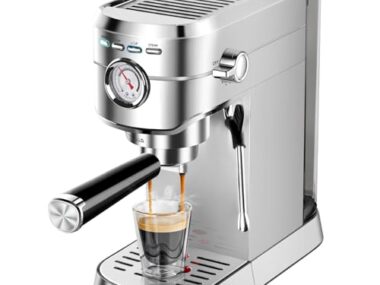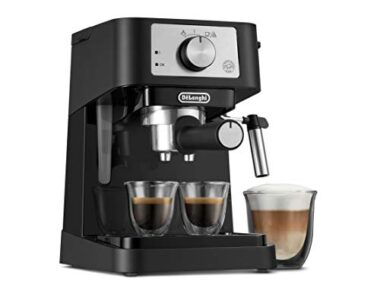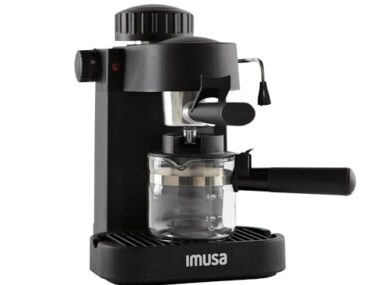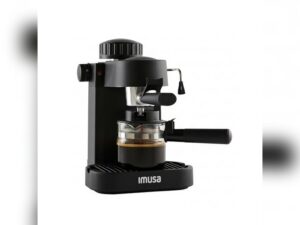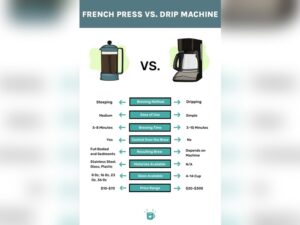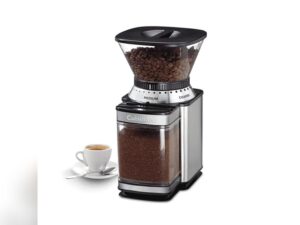If you love the rich, creamy taste of a perfectly crafted latte, your Breville espresso machine is the key to making café-quality drinks right at home. But how do you unlock its full potential to create that smooth, velvety latte that hits all the right notes?
Whether you’re a beginner or looking to sharpen your skills, this guide will walk you through every step—from pulling the perfect espresso shot to steaming milk like a pro. By the end, you’ll know exactly how to make the best latte with your Breville, impressing yourself and anyone lucky enough to share a cup.
Ready to brew your way to latte perfection? Let’s dive in!

Credit: www.reddit.com
Breville Espresso Machine Features
Breville espresso machines offer features that simplify latte making. These machines combine precision, control, and ease of use. They help create rich espresso shots and creamy milk foam. The design suits both beginners and experienced users. Many models include built-in grinders and temperature controls. These features ensure consistent quality for every cup. Understanding the key features helps in choosing the right machine for lattes.
Key Components For Latte Making
The espresso machine’s grinder is crucial for fresh coffee grounds. It allows adjustment of grind size for optimal extraction. The portafilter holds the coffee firmly during brewing. A powerful pump creates the pressure needed for rich espresso. The steam wand froths milk to the ideal creamy texture. Temperature control maintains the perfect brewing heat. These components work together to produce smooth lattes.
Models Ideal For Lattes
Breville Bambino Plus stands out for its automatic steam wand. It froths milk evenly with little effort. The Barista Express includes a built-in grinder for fresh coffee. It offers manual steam wand control for custom foam. The Oracle Touch automates espresso and milk texturing. It suits those who want convenience and quality. These models fit different needs but excel at making lattes.
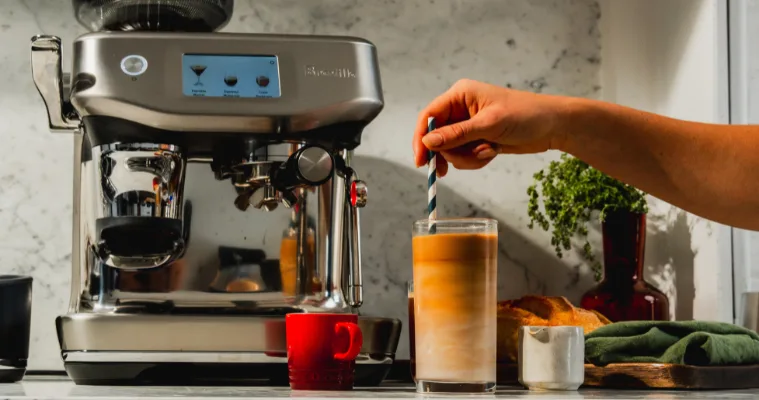
Credit: www.thegoodguys.com.au
Choosing Coffee Beans
Choosing the right coffee beans is a key step for making the best latte with your Breville espresso machine. The flavor and aroma of your latte depend heavily on the beans you select. Fresh, high-quality beans deliver a rich and balanced taste. Understanding bean types and roast levels helps you pick the perfect beans for your espresso. Grinding the beans correctly also affects the final flavor and crema. Let’s explore how to choose and prepare coffee beans for an ideal latte experience.
Bean Types And Roast Levels
Arabica beans offer a smooth, sweet flavor with fruity or floral notes. They are the most popular choice for espresso. Robusta beans have a stronger, more bitter taste and more caffeine. Many espresso blends mix Arabica and Robusta for balance.
Light roasts keep original bean flavors and have higher acidity. Medium roasts create a balanced taste with some sweetness. Dark roasts bring bold, smoky flavors and lower acidity. For lattes, medium to dark roasts work best. They give a rich and full-bodied espresso that blends well with milk.
Grinding Settings For Espresso
Grinding coffee beans finely is crucial for espresso. Too coarse a grind causes weak, watery shots. Too fine a grind leads to bitter or burnt flavors.
Your Breville machine usually has a built-in grinder. Adjust the grind size to find the perfect balance. Start with a fine grind setting and test the espresso shot. Adjust finer or coarser to improve taste and extraction time.
Grind just before brewing. Freshly ground coffee releases more flavor and aroma. Consistent grind size ensures even extraction and a smooth crema on your latte.
Preparing The Espresso
Preparing the espresso is the first step to a rich and smooth latte. It sets the foundation for the flavors and texture of your drink. The Breville espresso machine helps you control every detail, from grinding the beans to pulling the shot.
Grinding The Beans
Fresh coffee beans make a big difference. Use the built-in grinder on the Breville machine. Adjust the grind size to fine, almost like powder. Too coarse or too fine will spoil the taste. Grind just enough for one or two shots.
Tamping Techniques
After grinding, place the coffee in the portafilter. Use a tamper to press the grounds down evenly. Apply firm, steady pressure. A level tamp helps water flow through the coffee equally. This step prevents weak or bitter espresso.
Pulling The Perfect Shot
Lock the portafilter into the machine. Start the brew immediately. Watch the espresso flow—aim for a smooth, steady stream. It should take about 25 to 30 seconds. Stop the shot before it turns too dark or bitter. This ensures a balanced, rich espresso for your latte.
Steaming Milk For Latte
Steaming milk is key to making a perfect latte with your Breville espresso machine. The right texture and temperature create a creamy base. This enhances the coffee’s flavor and adds a smooth mouthfeel. Learning to steam milk well improves every cup.
Milk Selection Tips
Use fresh, cold milk for best results. Whole milk produces rich, creamy foam. Low-fat or skim milk creates lighter foam with bigger bubbles. Try alternatives like oat or almond milk if you prefer. Choose milk with a higher protein content to help foam hold better.
Using The Steam Wand
Start by purging the steam wand to clear water. Insert the wand just below the milk surface. Turn on the steam to create a whirlpool. Keep the pitcher steady and adjust the wand depth. Stop steaming when milk reaches around 140°F (60°C). Avoid overheating to prevent burnt taste.
Creating Smooth Microfoam
Microfoam is fine, velvety milk foam essential for latte art. Keep the steam wand near the surface to introduce air gently. Move the pitcher slightly to mix air and milk. Once volume increases, lower the wand deeper to heat milk evenly. Tap and swirl the pitcher after steaming to remove bubbles and polish the foam.
Combining Espresso And Milk
Combining espresso and milk is key to crafting a smooth, rich latte. The balance between the strong espresso shot and creamy milk defines the flavor. Using your Breville espresso machine, you can create this harmony easily. The process starts with pulling a perfect espresso shot. Next, steam the milk to the right temperature and texture. Finally, pour the milk into the espresso with care to blend both elements beautifully.
Pouring Techniques
Pour milk slowly and steadily into the espresso. Hold the cup at an angle to control the flow. Begin by pouring from a higher point to mix milk and espresso well. Move closer to the surface as the cup fills. This helps create a smooth layer of foam on top. Try gentle wrist movements to form latte art if you want. Practice makes pouring easier and more precise.
Achieving The Right Texture
Steamed milk should feel silky and smooth, not bubbly or dry. Use the steam wand on your Breville machine to heat and froth the milk. Keep the tip just below the milk surface to create microfoam. Stop steaming once milk reaches about 150°F (65°C). Too hot milk loses sweetness and texture. Aim for a glossy, velvety milk that blends well with espresso. This texture enhances both taste and mouthfeel of your latte.
Latte Art Basics
Latte art adds a beautiful touch to your coffee. It makes your latte more enjoyable to drink and share. Creating latte art needs smooth, creamy milk and steady pouring. The Breville espresso machine helps you steam milk to the right texture. Practice and patience improve your skill over time. Start with simple designs to build confidence and control.
Simple Designs To Try
Begin with the classic heart shape. Pour milk steadily into the espresso. Move the pitcher closer as the cup fills. Finish by lifting the pitcher and drawing through the foam. Try a rosette next. Pour in a slow, side-to-side motion. End with a quick pull through the pattern. These designs are easy and look great. They help you learn pouring speed and angle.
Tips For Better Pour Control
Hold the milk pitcher firmly but gently. Pour from a low height at first to avoid splashing. Raise the pitcher slightly to let the milk spread. Control the flow by adjusting the tilt of the pitcher. Practice pouring with water before using milk. Use steady, smooth movements for best results. Keep your wrist relaxed to improve control. Good pour control creates clear, sharp latte art.
Troubleshooting Common Issues
Troubleshooting common issues helps improve your latte-making experience. Small problems can affect taste and texture. Identifying and fixing these issues saves time and frustration. The Breville espresso machine is easy to use but may need adjustments. Below are solutions for common problems with espresso extraction and milk frothing.
Espresso Extraction Problems
Weak espresso often means the grind is too coarse. Try a finer grind for better flavor. Too much espresso or tamping pressure can cause bitter taste. Use moderate pressure and dose the right amount of coffee. If water flows too fast, check for clogs in the portafilter or group head. Clean the machine regularly to avoid blockages. Uneven extraction may occur if coffee grounds are not distributed well. Level and tamp coffee evenly for consistent shots.
Milk Frothing Challenges
Milk that is not frothy enough can be too cold. Use fresh, cold milk for best foam. The steam wand may be clogged or dirty. Clean the steam wand after each use. Large bubbles mean the wand is too deep in the milk. Keep the steam tip just below the surface for smooth microfoam. Overheating milk ruins the flavor. Stop steaming once the pitcher feels warm, about 140°F (60°C). Practice helps create creamy, velvety foam every time.
Customizing Your Latte
Customizing your latte with the Breville espresso machine lets you create a drink that fits your taste perfectly. Small changes make a big difference in flavor and texture. Explore simple ways to change your latte and enjoy every cup even more.
Flavor Additions
Add syrups like vanilla, caramel, or hazelnut to sweeten your latte. Use just a small amount to keep the coffee flavor strong. Spices such as cinnamon or nutmeg give warmth and depth. Sprinkle them on top or mix into the milk for extra taste.
Try a drop of chocolate syrup for a mocha twist. A dash of peppermint can be refreshing during cold months. These flavors make your latte unique and enjoyable every time.
Alternative Milk Options
The Breville espresso machine steams many types of milk well. Use almond, oat, soy, or coconut milk for different tastes and textures. Each milk froths differently, so try to find what you like best.
Oat milk creates creamy foam and has a mild flavor. Almond milk is lighter and adds a nutty note. Soy milk offers a smooth, rich texture that blends well with espresso. Coconut milk gives a tropical hint and a slightly thicker foam.
Choose the milk that matches your diet and flavor preference. Experimenting with alternative milks can transform your latte experience.
Cleaning And Maintenance
Cleaning and maintenance keep your Breville espresso machine working well. Regular care prevents buildup and ensures great taste every time. Follow simple steps to keep your machine in top shape. Clean parts often for best performance and longer machine life.
Daily Care Tips
Empty the drip tray and coffee grounds daily. Wipe the machine’s exterior with a damp cloth. Use the cleaning cycle if your model has one. Clean the portafilter and filter basket after each use. Rinse the water tank and refill with fresh water. Avoid leaving coffee residue inside the machine. Daily care stops clogs and keeps coffee flavor fresh.
Steam Wand Cleaning
After each use, wipe the steam wand with a clean cloth. Purge the wand by releasing steam for a few seconds. This removes milk residue inside the wand. Soak the tip of the wand in warm water if needed. Use a small brush to clean milk holes carefully. Regular cleaning prevents blockages and keeps steam strong. Clean steam wands make smooth, creamy milk foam every time.

Credit: www.youtube.com
Frequently Asked Questions
How To Make Latte At Home On Breville Espresso Machine?
Brew a double espresso using your Breville machine. Steam milk until smooth microfoam forms. Pour milk slowly over espresso. Serve immediately.
How To Make A Good Latte With An Espresso Machine?
Pull a single or double espresso shot into a glass. Purge the steam wand, then steam milk to create smooth microfoam. Pour steamed milk over espresso gently. Serve immediately for a rich, creamy latte.
What Is The Best Breville Espresso Machine For Lattes?
The Breville Bambino Plus excels for lattes with its automatic milk steaming wand. It delivers smooth microfoam quickly and consistently. This compact machine suits latte lovers seeking ease and quality.
How To Perfectly Froth Milk With Breville?
Purge the steam wand first. Submerge it just below milk surface. Introduce air briefly, then focus on swirling milk for smooth microfoam. Heat until 140–150°F. Stop steaming once milk doubles in volume. Tap pitcher to remove bubbles and swirl for creamy texture.
Conclusion
Making the best latte with your Breville espresso machine is simple. Start with fresh coffee beans and clean water. Use the steam wand carefully to create creamy milk foam. Pour the milk slowly over the espresso for a smooth mix.
Practice makes perfect, so enjoy each cup you make. Your homemade latte will taste rich and fresh every time. Enjoy the comfort of a café-style drink at home. Keep experimenting to find your perfect flavor balance. Happy brewing!

